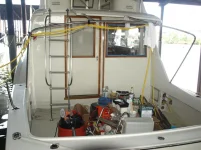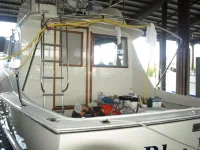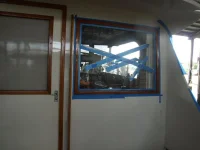jim rosenthal
Super Moderator
- Joined
- Apr 12, 2005
- Messages
- 11,050
- Hatteras Model
- 36' CONVERTIBLE-Series I (1969 -1977)
Maybe I'll try that. It would be a lot easier than spraying it with a Preval, which would mean spraying test panels etc. Not to mention annoying everyone in the adjacent slips as well. I have some West System rollers around here somewhere, I think I will try with them. If it looks bad I can always sand it off, 5454 sands easily.
Also this AM bought some Epiphanes wood finish for the teak part I've repaired. I am going to try to get one coat onto the teak in order to keep primer dust from getting into it. I think I'll decide which to do first when I get there. And today I'm bringing a cooler over there and keeping some ice in it. It is supposed to be over ninety today, although (thank God) she's in a covered slip.
Also this AM bought some Epiphanes wood finish for the teak part I've repaired. I am going to try to get one coat onto the teak in order to keep primer dust from getting into it. I think I'll decide which to do first when I get there. And today I'm bringing a cooler over there and keeping some ice in it. It is supposed to be over ninety today, although (thank God) she's in a covered slip.




